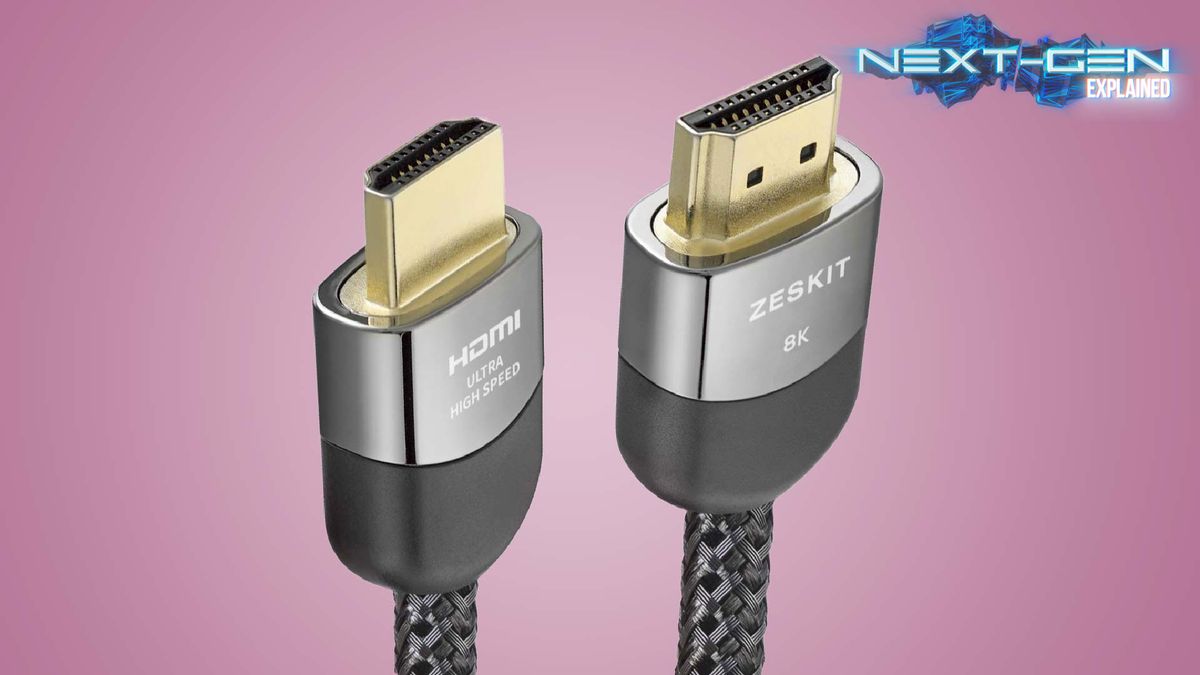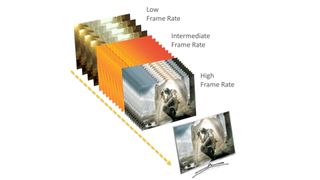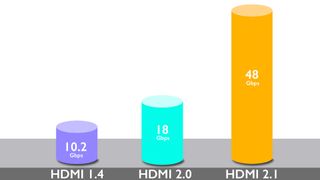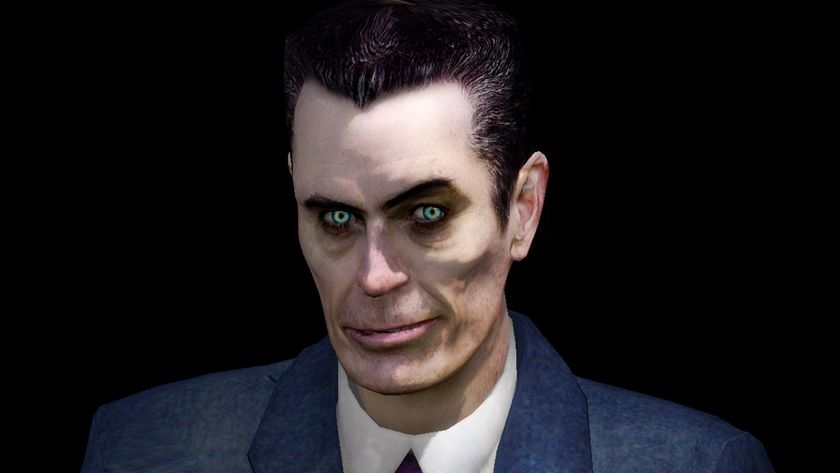What is HDMI 2.1? What the next-gen cable means for PS5 and Xbox Series X
Same plug, now ready for 8K gaming

The Xbox Series X and PS5 will have an HDMI 2.1 port. Microsoft and Sony haven’t told us this directly, but the facts they have spilled make it a certainty.
But what is HDMI 2.1? Does it really have any effect on the next wave of consoles? And will it mean we’ll all have to buy a new TV?
We will answer all these questions below. But the good news is there’s really nothing to stress about here.
What is HDMI 2.1?

HDMI 2.1 is the latest connection standard for the cable that will plug your PS5 or Xbox Series X into your TV. Next-gen consoles may be the stuff of the future, but they did rely on a familiar video cable. It will look exactly like the HDMI port on the PS4. There’s no change to the shape or size of the connector, and you will be able to plug in an old cable if your dog chews through your main one.
Like other HDMI updates, HDMI 2.1 is backwards compatible. It was announced in 2017, but has only become the standard for new TVs with the class of 2020. HDMI 2.1 lets the video cable transfer data at a much higher rate than the HDMI 2.0 of the Xbox One X, or the HDMI 1.4 of the original PS4 and Xbox One.
Its maximum data transmission rate is 48.0 Gbit per second, or six gigabytes per second. That is more than twice the bandwidth of HDMI 2.0. Your current TV almost certainly does not support HDMI 2.1. Does it seem you only just lugged that 2018 4K TV up the stairs and out of its box? There is no need to buy a new one. If your current TV plugs into an Xbox One or PS4 perfectly well, it will have no trouble with one of the new consoles. You could even connect them to a giant CRT TV from the 90s with a SCART plug using the right adapter.
Here’s a quick run-down of the features HDMI 2.0 enables:
Sign up to the 12DOVE Newsletter
Weekly digests, tales from the communities you love, and more
8K at up to 120Hz

HDMI 2.1 is the standard for 8K video. While HDMI 2.0 can handle 8K at up to 30Hz, the new spec can deliver it at up to 120Hz. “Hz” refers to the screen refresh rate (i.e. how many times the image is refreshed per second), but it effectively means frame rates of 120fps can be displayed. If your console or PC frame rate is higher than the refresh rate, frames are being rendered faster than your display can show them.
In an ideal world, the frame rate of the game played, the supported refresh rate of the HDMI connection and the refresh rate of the TV itself will all be roughly the same. They rarely are. But HDMI 2.1’s job is to make sure the connection itself isn’t a “bottleneck” for the foreseeable.
The data required to deliver 120 fresh 8K images every second is so great, HDMI 2.1 uses a form of compression called DSC to make all the information fit through the pipe. HDMI 2.1 can even go up to 10K resolution, at up to 100Hz, but this is not so interesting it won’t be a resolution used by TVs. Or consoles.
The HDMI standard is why Sony and Microsoft can talk about 8K, 120Hz gaming even before any games exist for the upcoming consoles. And we think it’s highly unlikely any big release games will focus on achieving 120 frames per second at 8K resolution. Making them look great at 4K, running at 60 frames per second, will bring a better best balance of visual thrills and smooth-looking motion. For most of us, the benefit of frame rates above 60 per second diminishes rapidly.
VR is the obvious exception. Virtual reality headsets tend to use high refresh rate panels because they help avoid motion sickness, and now we have the tech to actually transmit visual data at very high resolutions and very high refresh rates. Also, some stylized lower-poly or non-3D “normal” titles may hit 8K at 120fps with no problems.
Variable refresh rate (VRR)

This is the most gamer-friendly feature of the HDMI 2.1 line-up: variable refresh rate. It is similar to Nvidia G-sync, letting the refresh rate of the display match more closely the frame rate of the game you play. “By waiting until the next frame is ready to transport it, a smoother gaming experience can be provided to the user,” says the HDMI website.
This should eliminate screen tearing, which is where the screen refresh rate and the console’s frame rendering are out of sync, and you end up with the content from two frames on-screen at the same time. And it looks like the image has been ripped. Xbox One owners can already get a similar feature, FreeSync, when the console is used with certain TVs and monitors.
Auto Low Latency

Here is another great feature for gamers, Auto Low Latency. This enables a game console to take control over the processing mode of your TV, in order to prioritise low latency (lag) or processing quality depending on the content displayed.
Lots of settings you can apply in a TV’s settings menu can affect the number of milliseconds of lag between the frame being sent and it appearing on your TV. Auto Low Latency would let your Xbox Series X switch between a “game” style mode to a more “TV” style one on-the-fly as you move between a game and the Netflix app.
TV processing elements that may add to lag include things like motion smoothing techniques that create additional frames to help with fast-panning scenes in movies. Display lag will be further improved by a QFT, quick frame transport. This is another new HDMI 2.1 feature.
Dynamic HDR

Next up, a mouthful: Dynamic High Dynamic Range. HDMI gained support for HDR in version 2.0a, but this is next level stuff. But to explain why, we need to get a little granular. Before HDMI 2.1, we had static metadata for standard HDR over HDMI. This is where the source tells your TV how bright and dark the brightest and darkest parts of an image should be. But with static metadata, you have that one chunk of information for the whole film.
Dynamic metadata means the TV can receive different sets of information per scene, or even per frame, based on what the content provider/film grader inputs. This is important because while video content is often mastered with extremely bright whites in mind, the TVs we end up with in our living rooms can rarely recreate them at the same level. That fine-grain data means a TV can mitigate less impressive black or peak whites using tone mapping. It’s most useful for dark scenes, which can look too dark through some sets with static metadata.
This issue has actually already been addressed. HDR 10+ and Dolby Vision have space for dynamic metadata baked into the format, but now it is part of HDMI.
So do we all get these benefits?

All of these extra features are potentially hugely beneficial for prospective Xbox Series X and PS5 owners. But there are a few caveats.
To get any of them you need to have both one of the new consoles (or another HDMI 2.1 source) and an HDMI 2.1 TV. Not all TVs will support all of HDMI 2.1’s features either. That’s fairly obvious given almost all HDMI 2.1 sets will be 4K for some time to come.
We also do not know quite how many of the features will be supported by the Xbox Series X and PS5. It’d be silly for them not to get on board with Variable Refresh Rate if you ask us, but let’s not organise a date for the HDMI 2.1 celebration party just yet. HDMI 2.1’s feature list is a menu, not a list of mandatory standards to meet.
You’ll also need a new Ultra Speed cable to get the full 8K friendly bit-rate experience, but take a look at the price of 8K TVs right now before worrying about that. 8K: we’ll see you in 2025.
For more details on all the next-gen jargon, check out more of our next-gen explainers.
Andrew is a technology journalist with over 10 years of experience. Specializing particularly in mobile and audio tech, Andrew has written for numerous sites and publications, including Stuff, Wired, TrustedReviews, TechRadar, T3, and Wareable.

Valve leads considered making a "mediocre" game before Half-Life to build the team up, but original marketing exec said "if you do that, the company will fail"

Take-Two won't begin marketing GTA 6 until it's closer to release: "The anticipation for this title may be the greatest anticipation I've ever seen for any entertainment property"












